Ano, ženy mohou mít prospěch z lyží navržených speciálně pro ně. Tady je proč:
- Lehčí materiály: Ženské lyže používají lehké jádra, aby odpovídaly nižší tělesné hmotnosti, což usnadňuje kontrolu.
- Flexibilita: Měkčí vzory ohybu umožňují plynulejší zatáčky a menší námahu.
- Posunuté upínací body vpřed: Vázání je umístěno vpřed, aby vyhovovalo rozložení hmotnosti žen, zlepšující rovnováhu a zahájení zatáček.
Rychlý přehled:
- Ženské lyže: Přizpůsobené pro nižší váhu a snadnější ovládání, ideální pro mnoho žen lyžařek.
- Standardní lyže: Všestranné, ale tužší, vyžadující více úsilí, zejména pro lehčí lyžaře.
- "Snowfeet Short Skis: Kompaktní a uživatelsky přívětivé, skvělé pro všechny úrovně a terény."
| Typ lyží | Nejvhodnější pro | Klíčové vlastnosti |
|---|---|---|
| Dámské lyže | "Ženy lyžařky, upravené sjezdovky" | "Lehké, pružné, vpředu namontované" |
| Standardní lyže | "Smíšené terény, všechna pohlaví" | "Tvrdší, všestranné, delší délky" |
| "Snowfeet Skis" | "Od začátečníků po pokročilé" | "Krátké, citlivé, snadno ovladatelné" |
"Hlavní myšlenka: Vyberte si lyže podle své úrovně, typu postavy a preferencí terénu - ne jen podle pohlaví. Dámské lyže jsou skvělou volbou pro mnoho lidí, ale možnosti jako Snowfeet short skis nabízejí flexibilitu pro všechny lyžaře."
"Rozdíl mezi pánskými a dámskými lyžemi podle Skis com"
"1. Dámské lyže"
"Dámské lyže jsou navrženy speciálně pro ženskou anatomii a nabízejí přizpůsobené vlastnosti, které zlepšují výkon. Tyto lyže se liší ve třech klíčových oblastech pro lepší kontrolu, zahájení zatáček a rovnováhu."
"Hmotnost a pružnost"
"Dámské lyže používají lehčí, pružnější materiály, které odpovídají nižší tělesné hmotnosti. Díky tomu jsou citlivější a snáze ovladatelné bez ztráty výkonu."
"Lepší kontrola zatáček"
"Zvětšený sidecut pomáhá hladšímu zahájení zatáček. V kombinaci s nižším těžištěm tento design umožňuje snadnější a plynulejší zatáčení."
"Upravený bod rovnováhy"
"Vázání je namontováno asi o 2 cm (0,8 palce) vpřed oproti standardním pozicím. Tato úprava zlepšuje rozložení hmotnosti, což usnadňuje zahájení zatáček a udržení rovnováhy."
"Dámské lyžařské designy už nejsou jen zmenšené pánské modely s novou grafikou. Leslie Baker-Brown z Blizzard-Tecnica zdůrazňuje tento posun:"
"Naše dámské lyže jsou snazší na jízdu a o něco lehčí než pánská verze, což může být příjemnější zážitek. Nemusíte tolik dřít."
Některé dámské lyže však mohou v náročnějších podmínkách, jako je proměnlivý sníh nebo rozbředlý sníh, působit příliš lehce. Aby tomu výrobci předešli, nyní vytvářejí modely, které vyvažují snadné použití s odolností. Tento přístup prospívá lehčím lyžařům a zároveň podporuje rozvoj dovedností a budování sebevědomí.
| Designový prvek | Účel | Přínos |
|---|---|---|
| Lehčí jádrové materiály | Odpovídá nižší tělesné hmotnosti | Lepší kontrola |
| Zvýšený sidecut | Funguje s nižším těžištěm | Snazší zatáčení |
| Přední pozice uchycení | Zlepšuje rozložení hmotnosti | Zlepšená rovnováha a kontrola |
Dnes mnoho značek věnuje stejnou péči lyžím pro ženy jako pro muže, čímž zajišťují kvalitní možnosti, které odpovídají specifickým potřebám ženských lyžařek.
2. Standardní lyže
Standardní lyže, také známé jako all-mountain lyže, jsou navrženy tak, aby zvládaly různé podmínky a nemají úpravy specifické pro pohlaví. Tyto lyže obvykle mají šířku 85–98 mm pod nohou, což nabízí dobrý kompromis mezi všestranností a výkonem. To je užitečný referenční bod při porovnávání specializovaných designů s obecnějšími možnostmi.
Klíčové prvky designu
Standardní lyže obsahují prvky jako sidecut, rocker a camber, které zajišťují vyvážený výkon. Sidecut dává lyžím tvar přesýpacích hodin, což ovlivňuje jejich zatáčení. Rocker, tedy zakřivení nahoru na špičce a patě, zlepšuje plavání v měkkém sněhu. Camber, tedy klenba uprostřed lyže, zase zajišťuje stabilní kontakt se sněhovým povrchem.
Přehled výkonu
Tyto lyže jsou spolehlivé na různých terénech, ale pro lehčí lyžaře mohou působit méně citlivě kvůli jejich obecně tužší konstrukci.
| Typ lyží | Šířka | Nejvhodnější pro | Úroveň dovedností |
|---|---|---|---|
| Carving | 60–70 mm | Upravené sjezdovky | Začátečník/Středně pokročilý |
| All-Mountain | 85–98 mm | Smíšené podmínky | Středně pokročilí |
| Freeride | 98+ mm | Proměnlivý terén | Pokročilí |
Regionální rozdíly
Klasifikace šířky lyží se může lišit podle regionu. Například evropští výrobci často řadí lyže s šířkou pod nohou 60–70 mm mezi carvingové, zatímco v Severní Americe jsou užší lyže obvykle klasifikovány jako 70–80 mm pod nohou.
Nové trendy
Roste zájem o unisex designy lyží. Některé značky nyní nabízejí identické modely pro všechna pohlaví, s rozdíly pouze v délce a designu vrchní vrstvy. I když jsou tyto unisex možnosti praktické, lyže přizpůsobené specifickým potřebám mohou některým uživatelům nabídnout lepší výkon.
Výběr správných standardních lyží závisí na schopnostech lyžaře a preferovaném terénu. Začátečníci mohou preferovat lehčí, měkčí lyže v kratších délkách, zatímco středně pokročilí lyžaři často najdou all-mountain lyže vhodné pro různé podmínky. Pokročilí lyžaři naopak mohou zvolit tužší, citlivější modely, které odpovídají jejich úrovni dovedností a terénu, který často navštěvují. Dále prozkoumáme přizpůsobená řešení Snowfeet pro různé výkonnostní potřeby.
sbb-itb-17ade95
3. Snowfeet krátké lyže a Skiskates
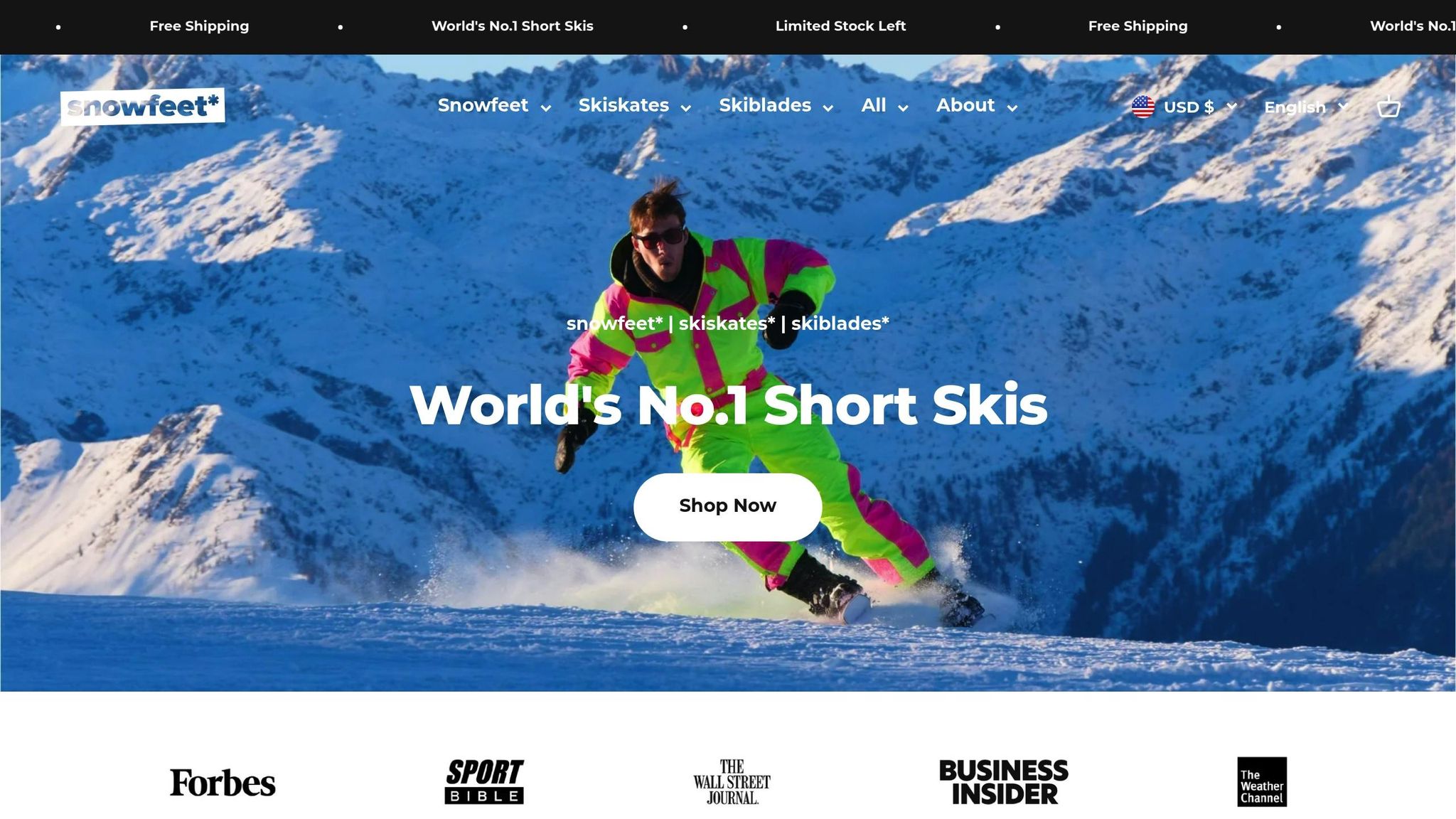
Snowfeet nabízí řadu krátkých lyží a Skiskates navržených tak, aby vyhovovaly různým typům postav a úrovním dovedností, řešíc některé běžné problémy tradičních lyží.
Jejich nabídka zahrnuje modely od 44cm skiskates po 120cm short skis, které všechny vyžadují méně úsilí a podporují přirozenější postoj ve srovnání s dlouhými lyžemi. Tyto kratší designy se zaměřují na poskytování citlivé kontroly a snadné použití.
| Délka modelu | Nejvhodnější pro | Klíčové vlastnosti |
|---|---|---|
| 44cm Skiskates | Bruslaři na ledě, hokejisté | Skvělé pro rychlé zatáčky a pohyb podobný bruslení |
| 65cm Skiblades | Freestyle, instruktoři | Kombinace lyžování a bruslení |
| 99cm Skiblades | All-mountain, carving | Snadná ovladatelnost s univerzálním výkonem |
| 120cm Short Skis | Rychlost, carving | Nabízí stabilitu při nízké hmotnosti |
Navzdory menší velikosti tyto lyže vynikají v úzkých prostorách a umožňují ostré, kontrolované zatáčky, což je ideální pro muldy nebo terénní parky.
Další výraznou vlastností je jejich kompatibilita s běžnými zimními botami, což v mnoha případech eliminuje potřebu speciálních lyžařských bot. Vázací systémy jsou navrženy tak, aby vyhovovaly různým velikostem a typům bot a zároveň zachovaly bezpečnost. Tento praktický přístup odráží zaměření Snowfeet na vytváření vybavení, které je uživatelsky přívětivé a zároveň výkonné.
Snowfeet je určen pro lyžaře všech úrovní zkušeností:
- Začátečníci: Kratší lyže usnadňují učení díky lepší kontrole a menší únavě.
- Pokročilí lyžaři: 99cm skiblades představují rovnováhu mezi stabilitou a ovladatelností, pomáhají uživatelům zdokonalit carvingové techniky.
- Pokročilí lyžaři: Kompaktní modely jsou ideální pro freestyle triky, rychlé zatáčky a udržení rychlosti a stability.
Recenze zákazníků zdůrazňují popularitu těchto produktů, přičemž většina modelů získává hodnocení mezi 4,9 a 5,0 hvězdičkami od stovek spokojených uživatelů.
Výhody a omezení
Tato analýza zdůrazňuje klíčové přednosti a kompromisy různých designů lyží. Níže uvedená tabulka porovnává dámské lyže, standardní lyže a Snowfeet krátké lyže:
| Vlastnost | Dámské lyže | Standardní lyže | Snowfeet Short Skis |
|---|---|---|---|
| Jádrové materiály | Lehké materiály jako Paulownia nebo lehké dřevěné směsi | Těžší, tvrdší materiály | Navrženo pro obratnost s lehkými materiály |
| Vzor pružnosti | Měkčí pružnost pro snadnější zatáčení | Tvrdší, vyžadující více úsilí | Vyvážená pružnost pro přesnou kontrolu |
| Rozsah délky | Obvykle až do 175 cm | Až 190+ cm | Rozsah od 44 do 120 cm |
| Rozložení hmotnosti | Optimalizováno pro lehčí lyžaře | Navrženo pro širší škálu váhy | Vhodné pro různé postavy |
| Iniciace zatáček | Rychlé a citlivé | Vyžaduje více úsilí | Rychlé a obratné |
| Univerzálnost terénu | Nejlepší pro upravené sjezdovky | Zvládá různé terény | Vykonává se na různých terénech |
Každý design slouží jedinečným výkonovým potřebám. Dámské lyže upřednostňují lehké materiály a flexibilitu, což je činí snazšími na manévrování, zejména pro menší nebo lehčí lyžaře. Standardní lyže, se svou tužší konstrukcí a delší délkou, nabízejí lepší stabilitu na různých terénech, ale mohou být pro začátečníky nebo osoby s menší postavou obtížnější na ovládání.
Snowfeet krátké lyže řeší tyto výzvy tím, že nabízejí:
- Lepší kontrola: Jejich kratší délka usnadňuje ovládání a snižuje fyzickou námahu.
- Zlepšený postoj: Vyvážené rozložení hmotnosti pomáhá snižovat únavu.
- Flexibilita terénu: Dobře se přizpůsobují různým terénům a stylům lyžování.
Někteří výrobci se nyní více zaměřují na výkon než na designy specifické pro pohlaví. Nakonec nejlepší lyže závisí na vašem typu postavy, úrovni dovedností a cílech. Dámské lyže fungují dobře pro mnoho ženských lyžařek, ale možnosti jako Snowfeet krátké lyže nabízejí alternativu, která řeší běžné výzvy napříč různými postavami a úrovněmi zkušeností.
Výběr
Při výběru lyží se zaměřte na svůj styl lyžování, typ postavy a úroveň dovedností – pohlaví hraje menší roli.
Krátké lyže jsou ideální pro kontrolu a snadné použití. Vezměte si například Snowfeet's 44 cm Skiskates. Za 390 $ získaly hodnocení 4,9/5 od 126 ověřených uživatelů. Jsou ideální pro začátečníky, nabízejí přesné ovládání a pevnou stabilitu.
Pro ty, kteří chtějí posunout své dovednosti dál, model Snowfeet 65 cm (450 $) nabízí lepší carving a zároveň je odpouštějící. Verze 99 cm (490 $) je navržena pro rychlost a stabilitu. Tady je, co říká Jakub F:
"Pokud hledáte něco lehkého, zábavného a praktického na svahy – něco, co vám ušetří čas a nervy – Snowfeet jsou skvělou volbou. Ať už jste rodič, začátečník, nebo jen hledáte nový způsob lyžování – s těmito si užijete spoustu zábavy."
Zde je rychlý průvodce, jak sladit svou úroveň dovedností s vhodnou délkou lyží:
| Úroveň dovedností | Doporučená délka | Nejvhodnější pro | Doporučený model |
|---|---|---|---|
| Začátečníci | 38–44 cm | Snadné učení, kontrola | Snowfeet Mini Ski Skates |
| Středně pokročilí | 65–99 cm | Lepší carving, rozmanitost | Snowfeet Skiblades |
| Pokročilí | 99–120 cm | Rychlost, stabilita | Snowfeet Short Skis |
Krátčí lyže také snižují fyzickou zátěž, což je skvělá volba pro začátečníky nebo ty, kteří chtějí bezstarostný zážitek. Ally z Indy sdílí své zkušenosti:
"Tyto jsou skvělé! Zůstala jsem na bunny svahu v Keystone a rychle jsem si na ně zvykla. Jsou tak snadné na přepravu a rychlé nasazení i sundání z lyftu."
Nakonec si vyberte lyže, které odpovídají vaší postavě a lyžařským cílům. Moderní designy lyží se zaměřují na výkon, proto upřednostněte vybavení, které vyhovuje vašim potřebám.
Často kladené otázky
Čím se ženské lyže liší a jak tyto rozdíly ovlivňují výkon při lyžování?
Ženské lyže jsou navrženy s konkrétními vlastnostmi, které lépe vyhovují anatomii a stylu lyžování mnoha žen. Obvykle jsou lehčí, používají materiály jako dřevo Paulownia, aby byly snazší na ovládání a citlivější pro lehčí jezdce. Navíc často mají posunutou montáž vázání více dopředu a měkčí flex, což pomáhá s plynulejším zahájením zatáček a kontrolou.
Tyto rozdíly mohou zlepšit pohodlí a výkon, zejména u lyžařů s nižší tělesnou hmotností nebo u těch, kteří preferují více odpouštějící jízdu. Nicméně mnoho moderních lyží se stává všestrannějšími a vyhovuje širokému spektru lyžařů bez ohledu na pohlaví. Je důležité zaměřit se na to, co je pohodlné a co nejlépe vyhovuje vaší úrovni dovedností, rozložení váhy a preferovanému stylu lyžování.
Jsou Snowfeet krátké lyže snadněji ovladatelné a lepší pro začátečníky ve srovnání s tradičními lyžemi?
Ano, Snowfeet krátké lyže jsou navrženy tak, aby byly pro začátečníky přívětivější než tradiční lyže. Jejich kratší délka je činí velmi obratnými a snadněji ovladatelnými, což novým lyžařům umožňuje zatáčet s menší námahou a rychleji získat sebevědomí.
Krátké lyže jsou také více odpouštějící, což znamená, že méně často zachytávají hrany, což může pomoci začátečníkům vyhnout se pádům a soustředit se na zlepšování svých dovedností. Celkově poskytují plynulejší zážitek z učení, což je vynikající volba pro každého, kdo právě začíná na svazích.
Existují určité podmínky nebo terény, kde ženské lyže nemusí podávat tak dobrý výkon jako tradiční nebo Snowfeet krátké lyže?
Ženské lyže jsou často navrženy tak, aby vyhovovaly nižší hmotnosti a odlišnému rozložení váhy, což je může učinit velmi efektivními pro mnoho lyžařek. Nicméně za určitých podmínek, jako jsou zledovatělé svahy nebo těžký, proměnlivý sníh, mohou některé ženské lyže působit příliš lehce nebo méně stabilně ve srovnání s tradičními lyžemi nebo Snowfeet krátkými lyžemi, které jsou známé svou všestranností a kontrolou.
Krátké lyže jako možnosti Snowfeet (např. 65 cm, 99 cm, 120 cm) jsou obzvlášť přizpůsobivé a nabízejí vynikající výkon na různých terénech. Poskytují jedinečnou rovnováhu mezi stabilitou a ovladatelností, což je skvělá volba pro lyžaře všech úrovní, včetně žen hledajících spolehlivý výkon v náročných podmínkách.

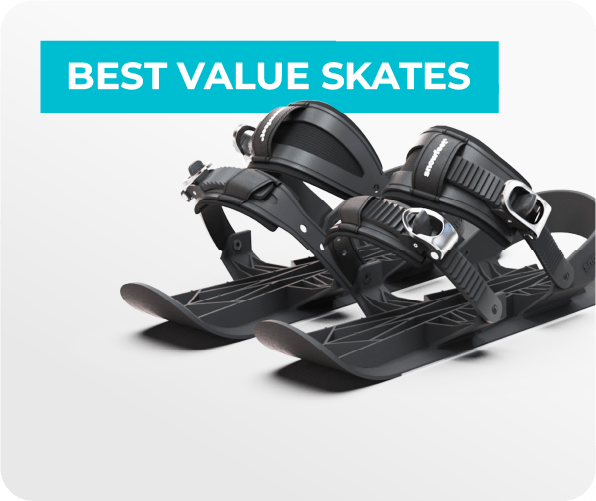
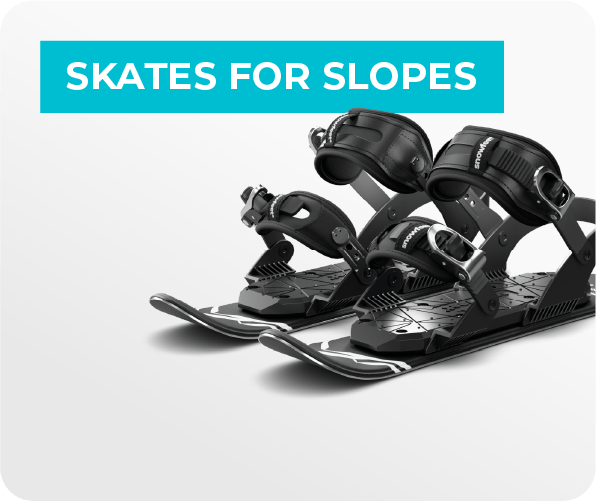
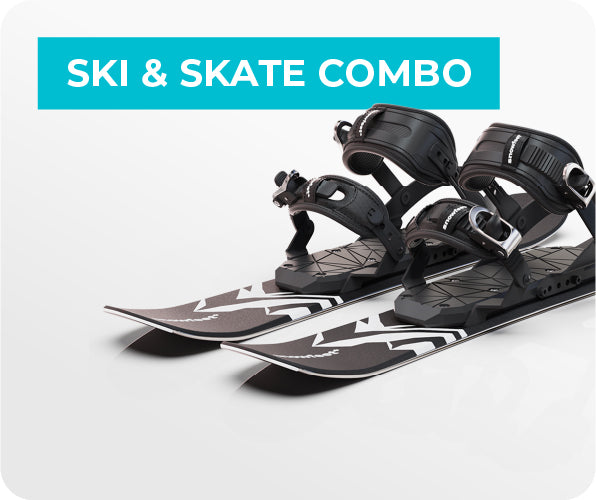
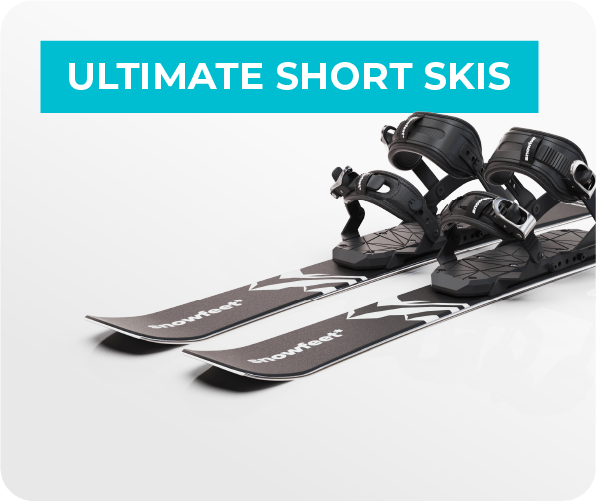
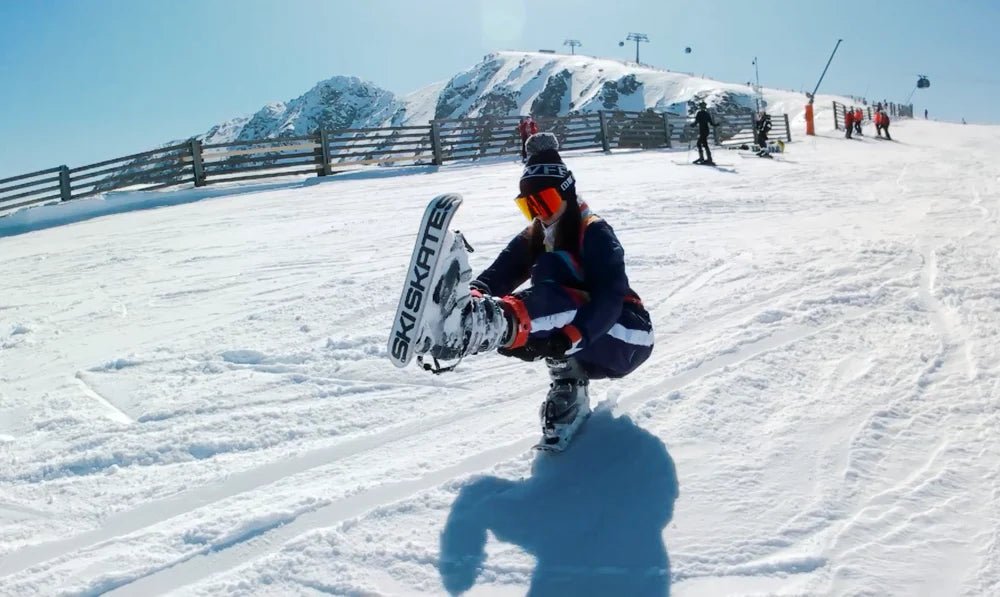
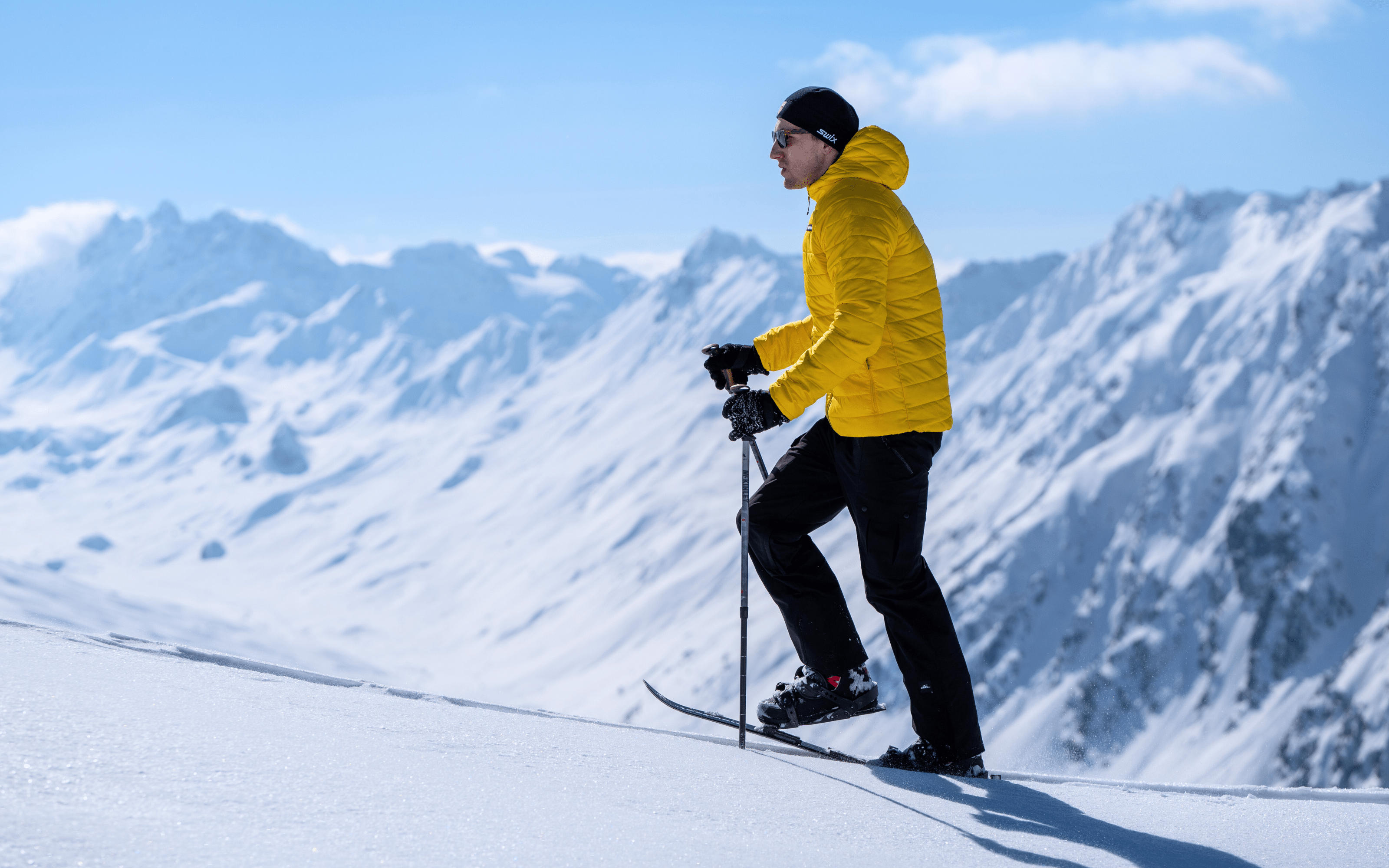
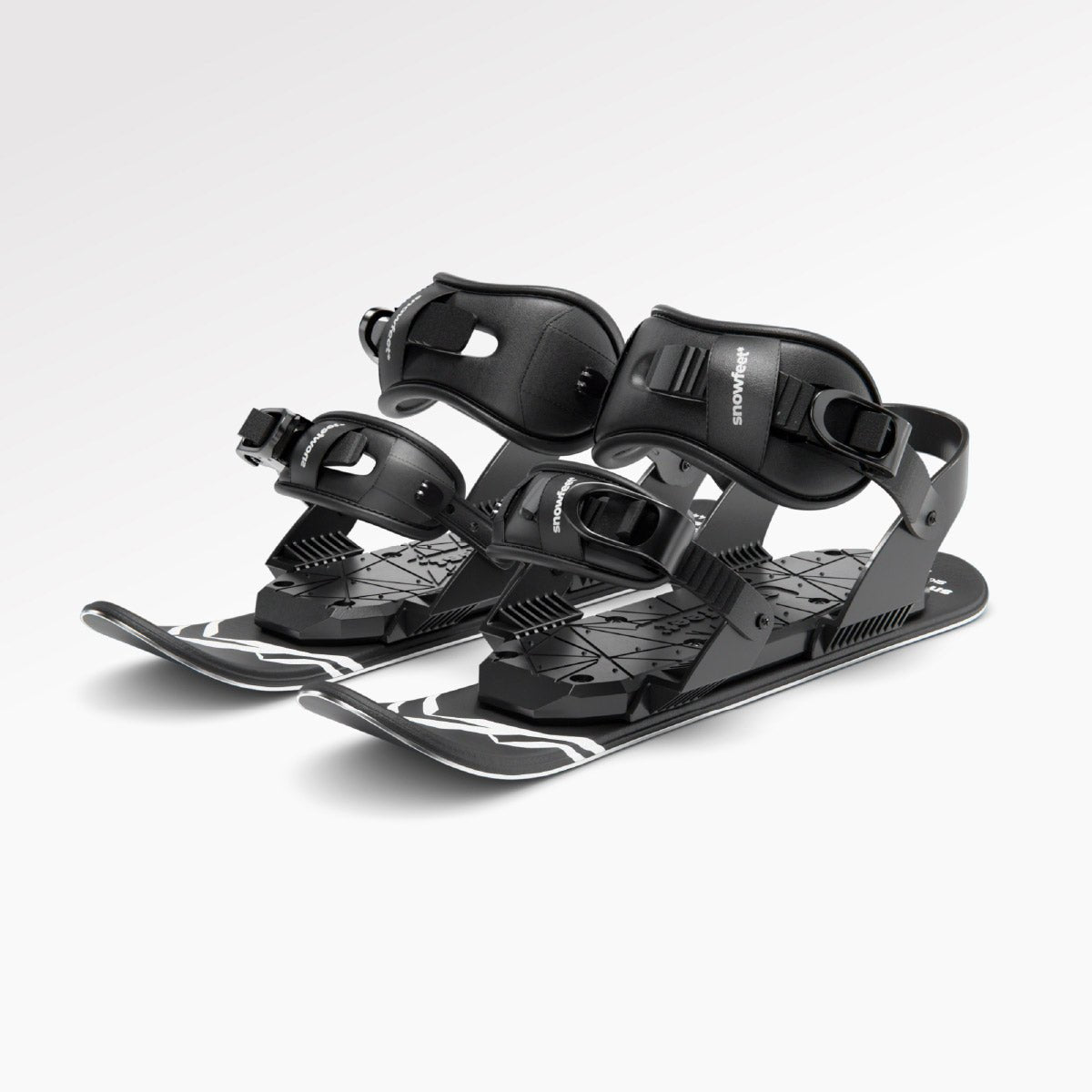
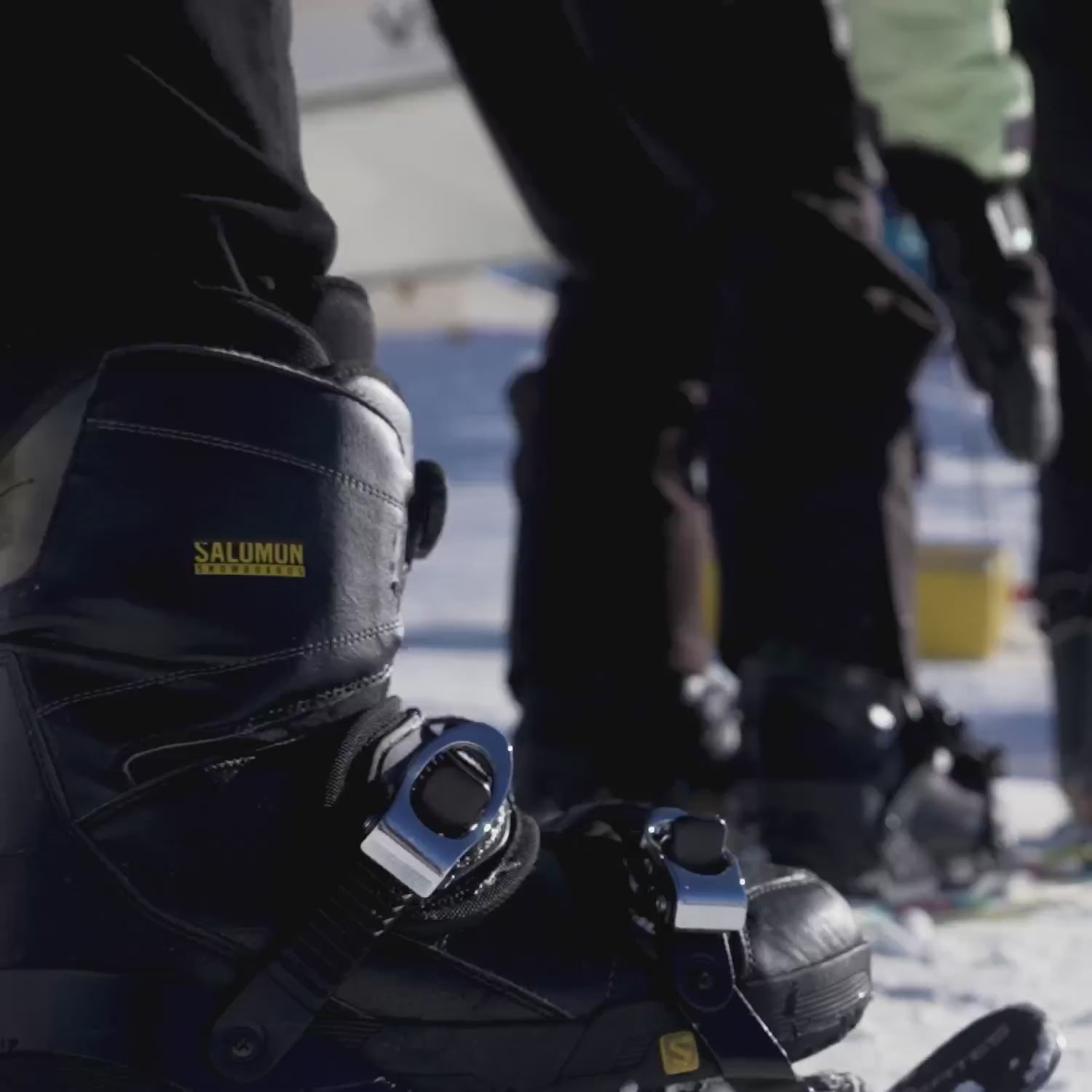
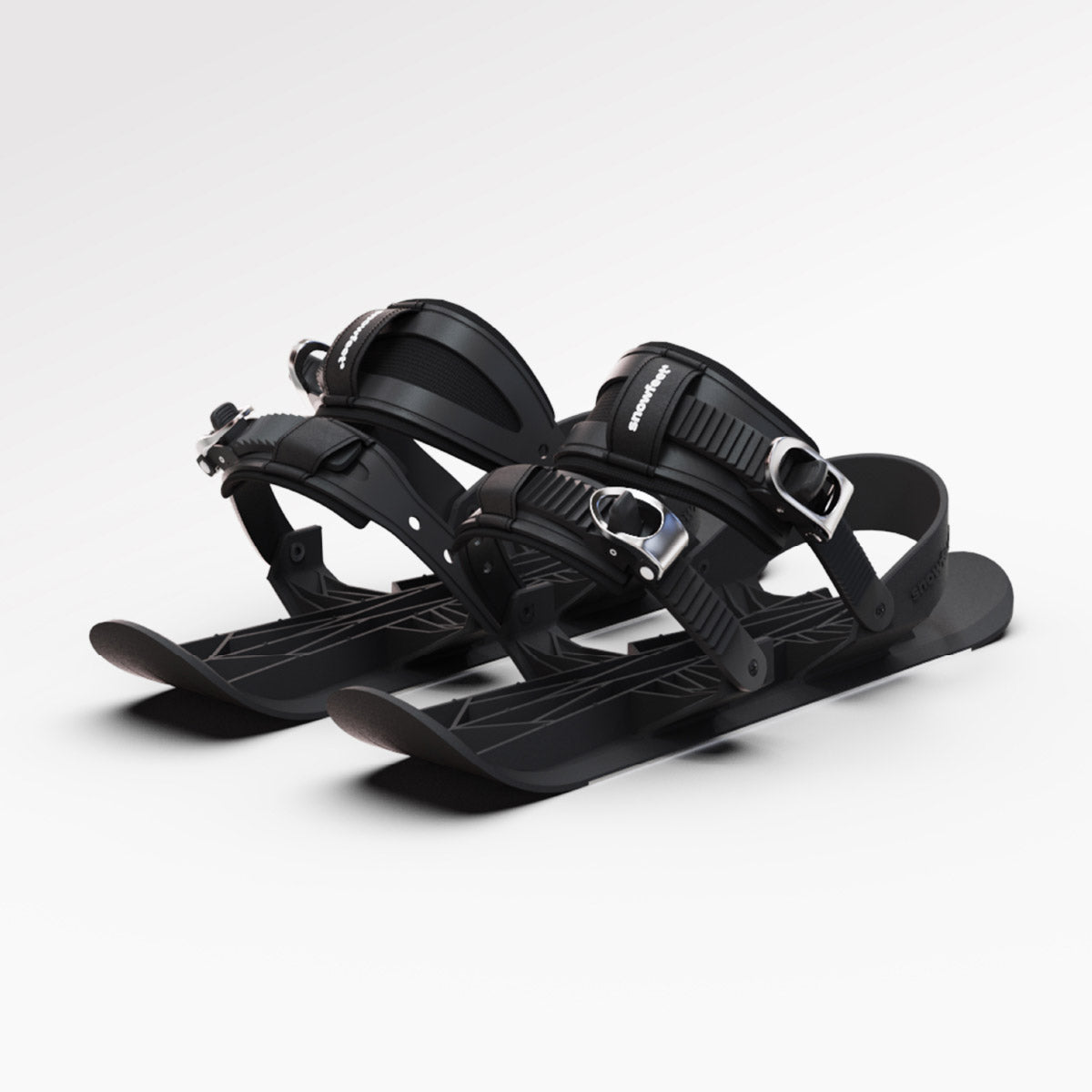

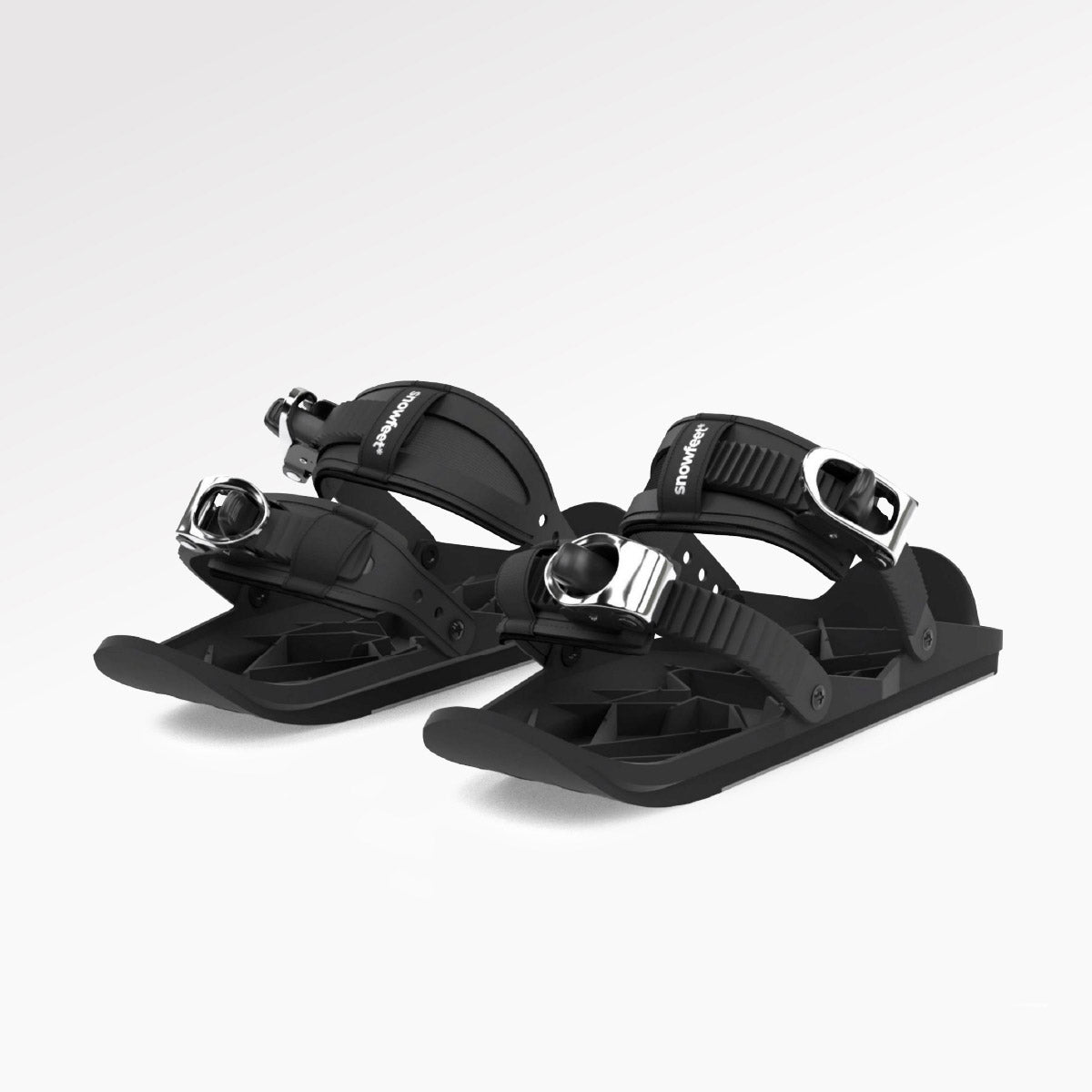
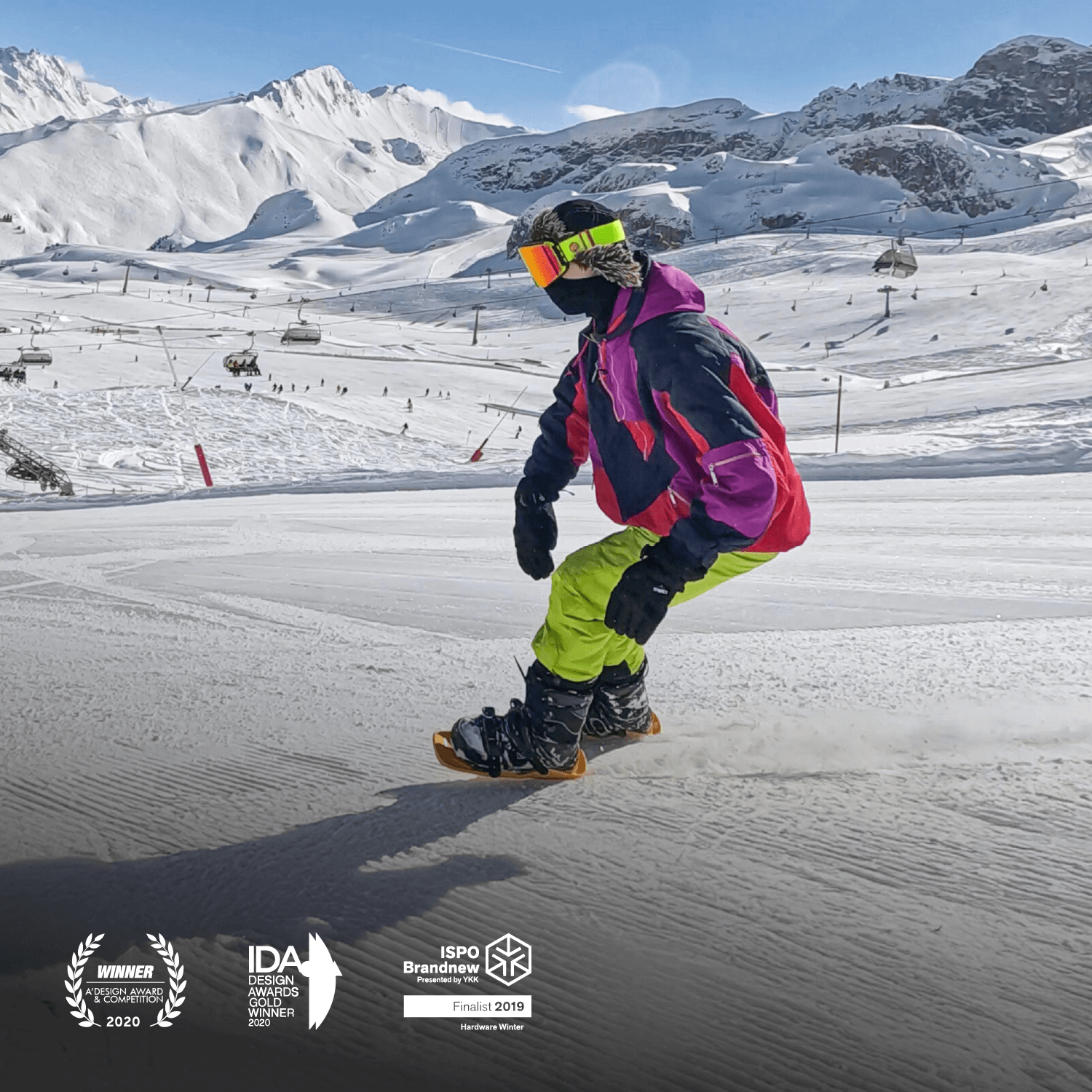
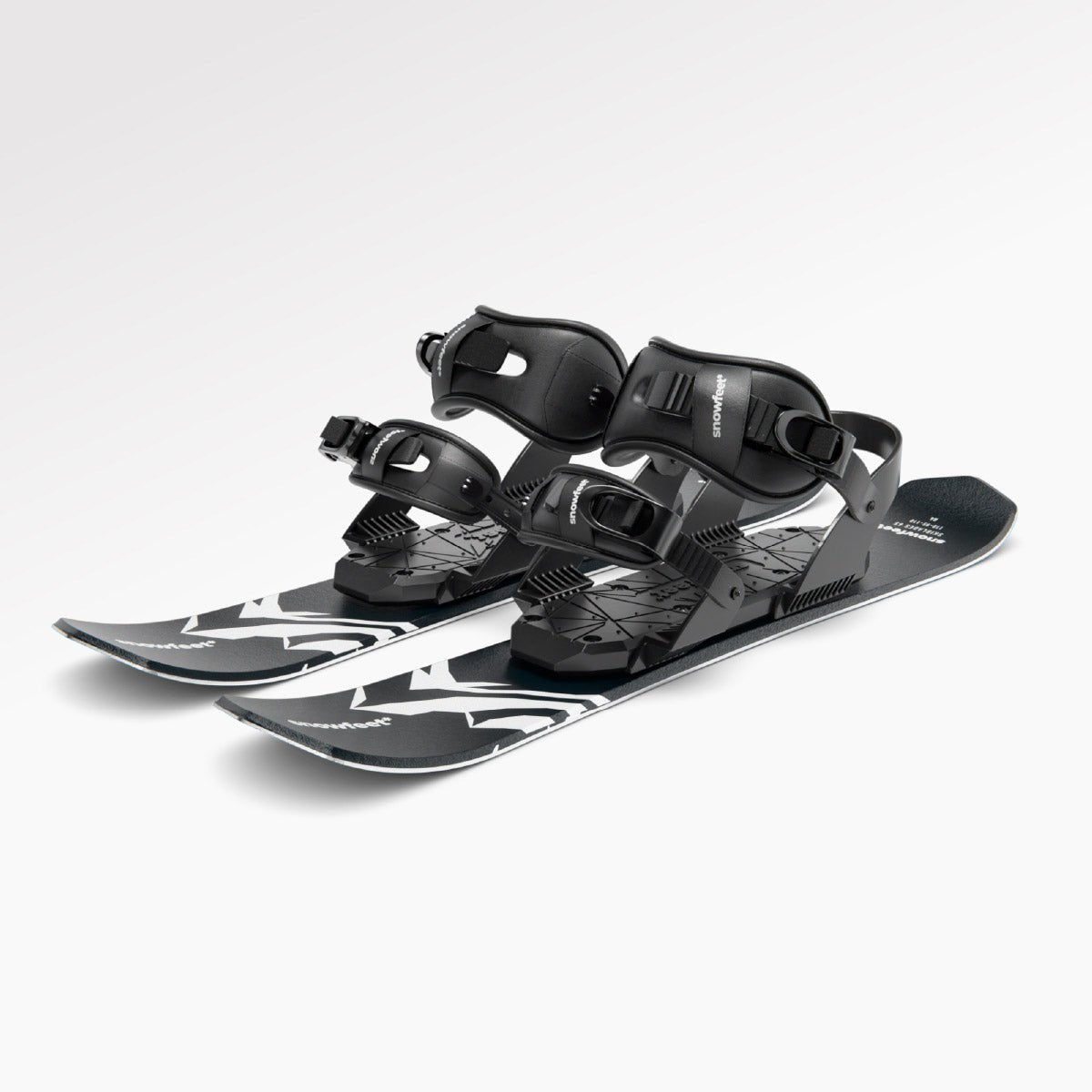
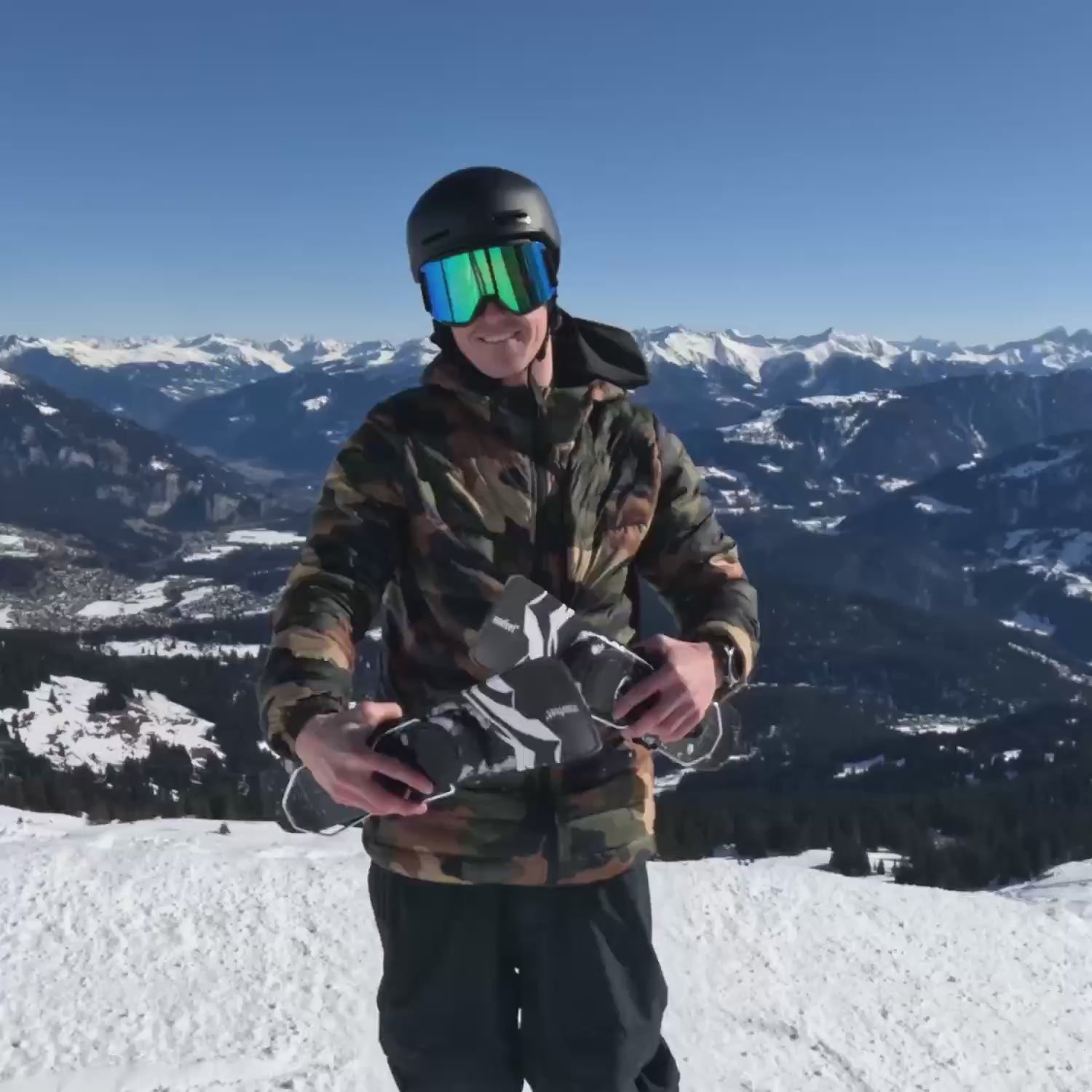
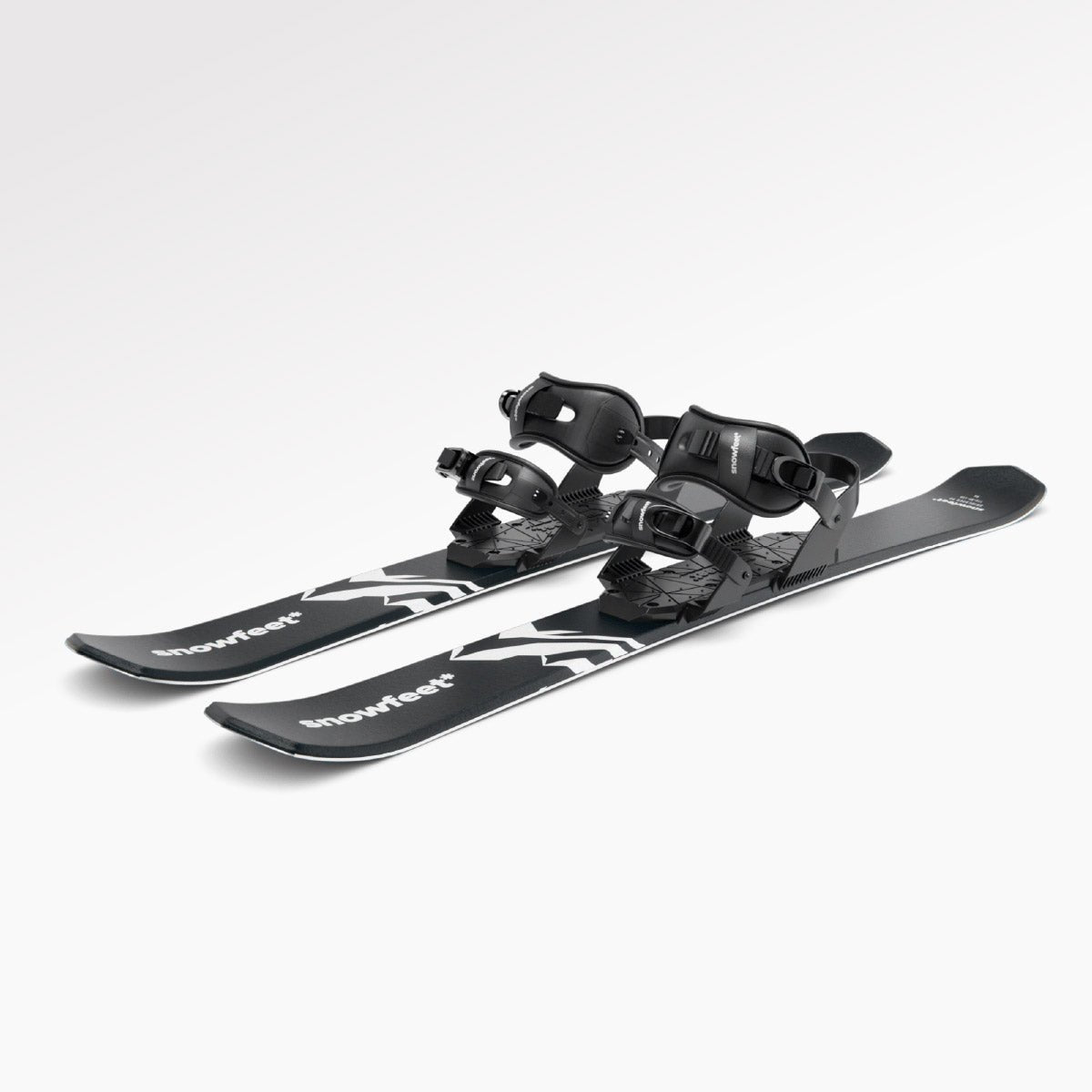
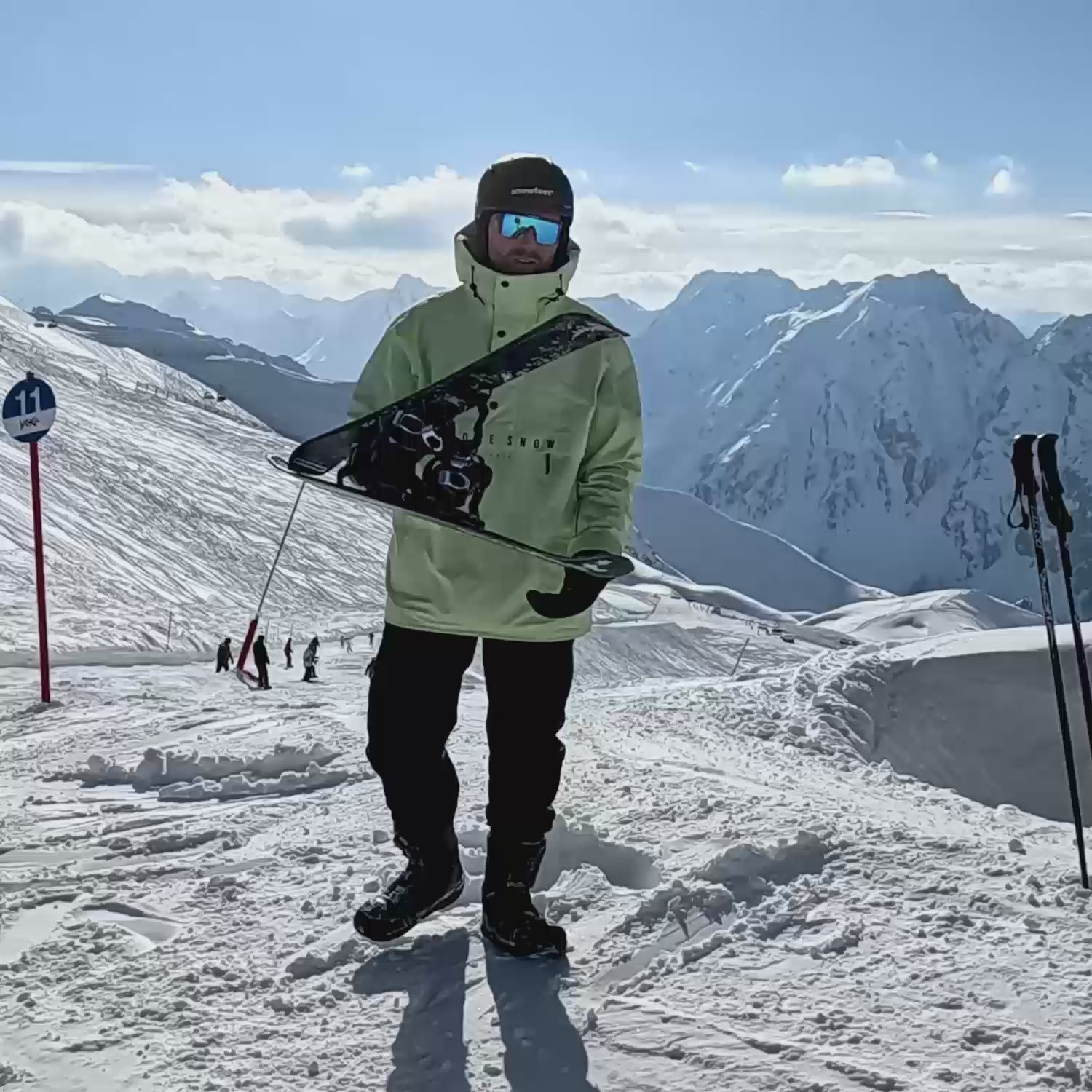
Zanechte komentář
Tento web je chráněn službou hCaptcha a vztahují se na něj Zásady ochrany osobních údajů a Podmínky služby společnosti hCaptcha.